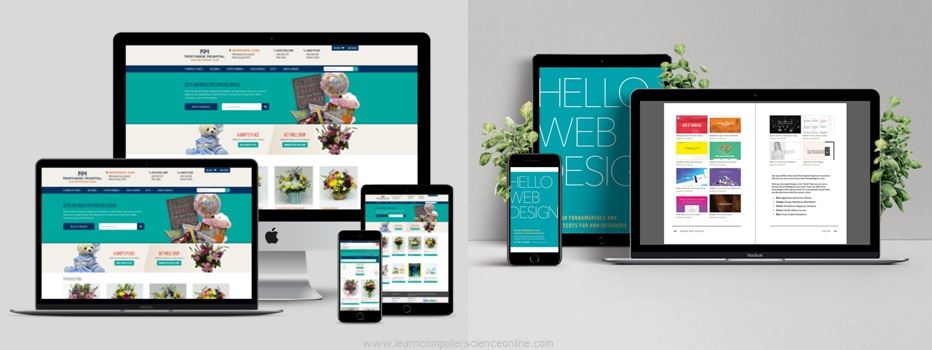The value of web development for creating scalable websites
Finding the Uses of Web Design for Enhancing Individual Experience
Website design substantially affects individual experience throughout electronic platforms. By concentrating on customer requirements, developers produce web sites that are not just aesthetically enticing yet additionally practical and available. Crucial element such as responsive design and instinctive navigating play essential functions in boosting use. However, the challenge depends on understanding how these components engage to satisfy progressing individual assumptions. The expedition of these elements discloses understandings that can change digital interaction.
Understanding User Demands and Assumptions
Exactly how can Web designers efficiently straighten their developments with customer requirements and expectations? To attain this, designers need to take part in complete user research to record the preferences, habits, and pain points of their target audience. Using methods such as surveys, interviews, and usability screening, developers collect useful insights that guide their decision-making procedure.
Developing customer identities can better aid in picturing different user sections, guaranteeing that style choices resonate with genuine users. In addition, designers need to focus on user-friendly navigating and clear phone call to activity, which promote seamless interactions.
The Significance of Responsive Layout
As users increasingly gain access to websites on a selection of tools, receptive layout has come to be important for creating a favorable customer experience. This method enables website to adjust perfectly to various display sizes, making certain that material is accessible and conveniently readable, no matter of whether a customer is on a desktop computer, tablet computer, or smartphone.
Responsive layout enhances functionality by offering a constant experience, lowering the requirement for too much scrolling or zooming. Furthermore, internet search engine prefer receptive web sites, which can boost a website's visibility and reach. This layout approach additionally improves development initiatives, as it eliminates the demand for numerous versions of a website customized to certain gadgets.
Incorporating responsive style not only satisfies customer assumptions however likewise aligns with modern-day Web criteria, fostering engagement and complete satisfaction. Inevitably, it indicates a dedication to access and inclusivity, critical elements for any successful on the internet existence.
Producing Intuitive Navigation
An effective website design not just includes receptive layouts however additionally focuses on user-friendly navigating, which is essential for guiding customers through a website seamlessly. Instinctive navigating warranties that users can conveniently situate info without unneeded initiative. Crucial element consist of a clear menu structure, rational categorization of content, and recognizable icons or labels.
Uniformity in navigating positioning across different web pages cultivates familiarity, improving individual convenience. Utilizing breadcrumb tracks permits customers to track their place within the website, aiding in backtracking and expedition. Additionally, maximizing navigating for mobile phones is fundamental, as lots of users access web sites using smartphones and tablets.
Integrating a search bar can in addition improve the user experience, enabling quick access to particular web content. In general, intuitive navigating reduces frustration, encourages longer site brows through, and eventually brings about greater individual fulfillment and interaction. By concentrating on navigating design, Web developers can significantly improve the total customer experience.
Using Aesthetic Hierarchy Successfully
Efficient Web style rests on the critical use of aesthetic pecking order, making certain that individuals can effortlessly navigate material and understand the most crucial details at a glimpse. By prioritizing components based on their value, developers can lead users' interest towards vital locations, such as headings, calls-to-action, and crucial pictures.
Methods such as size, color, placement, and contrast play critical roles in developing this hierarchy. For instance, bigger message usually represents higher significance, while contrasting shades can accentuate crucial activities. Additionally, consistent placement and spacing aid develop an arranged layout, making it less complicated for users to refine details swiftly.
Incorporating imagery purposefully can boost understanding and retention of content. When used efficiently, a distinct visual power structure not only improves functionality but likewise enhances the general user experience, allowing users view publisher site to involve meaningfully with the internet site's objectives.
Enhancing Readability and Availability
Aesthetic pecking order considerably influences just how customers interact with a website, yet just as crucial is assuring that web content stays easily accessible and readable to all audiences. Reliable website design uses clear typography, consisting of suitable font style dimensions, line spacing, and comparison to enhance readability. The use of high-contrast shade schemes can help those with aesthetic problems, while larger text dimensions profit users with checking out troubles. Additionally, integrating alt message for pictures assurances that individuals making use of screen viewers can access important info.
Developers should additionally consider the format and structure of material, making use of headings and bullet indicate damage up large blocks of text. This not just help skimming but likewise aids users with cognitive impairments. Ultimately, prioritizing readability and availability cultivates an inclusive environment, enabling diverse audiences to engage fully with the click here to find out more site's web content (web development). By resolving these aspects, Web designers can greatly improve the overall user experience
Integrating Involving Aesthetic Aspects
Including appealing aesthetic elements is essential for enhancing individual experience in Web style. Color psychology plays a significant duty in affecting customers' behaviors and emotions, while interactive graphics can capture focus and urge expedition. With each other, these components develop a more appealing and dynamic online atmosphere.
Value of Shade Psychology
The significance of color psychology in website design can not be overemphasized, as it plays an essential duty in shaping individual assumptions and behaviors. Shades evoke feelings and can influence how customers connect with a site. As an example, blue often communicates trust fund and professionalism and reliability, making it a prominent choice for banks. Conversely, red can trigger urgency and excitement, typically made use of in sales promotions. Recognizing the emotional results of shade allows developers to develop a cohesive aesthetic experience that reverberates with individuals. Furthermore, consistent color schemes improve brand name identification and acknowledgment, making certain customers associate certain colors with specific brands. Ultimately, thoughtful application of shade psychology can significantly boost individual interaction and satisfaction, making it an essential element of effective Web style.
Utilizing Interactive Graphics
Engaging customers through interactive graphics can significantly improve their general experience on a website. These elements, such as computer animations, infographics, and clickable visuals, cultivate a much deeper link in between individuals and the material. By urging expedition and engagement, interactive graphics can make complex info a lot more absorbable and retain individuals' interest longer. Furthermore, they provide an opportunity for customers to engage with the website in a meaningful means, leading to enhanced satisfaction and a higher chance of returning. It is important to balance interactivity with usability; overly intricate graphics might perplex users. Correctly applied, interactive graphics can transform an easy watching experience into an interesting journey, inevitably adding to boosted user experience and website efficiency.
Constant Testing and Renovation Techniques
Continual testing and enhancement methods act as crucial parts in enhancing website design for individual experience. By executing repetitive screening, developers look at this site can gather real-time feedback on user interactions, allowing them to recognize pain points and areas for improvement - web development. A/B screening, usability testing, and warm mapping work methods that provide understandings right into customer habits, enabling enlightened style decisions
These techniques encourage a culture of continuous improvement, instead than an one-time launch. Web designers can use analytics tools to monitor efficiency metrics, such as bounce rates and conversion rates, which direct needed changes. Regular updates based on customer feedback not only improve functionality yet additionally foster user complete satisfaction and commitment.
Eventually, continuous screening and improvement create a responsive Web layout environment where customer experience is focused on, guaranteeing that the website develops along with customer requirements and technological innovations. This positive strategy results in an extra reliable and engaging online existence.
Often Asked Questions
Exactly How Can Color Psychology Impact Individual Experience in Website Design?
Color psychology greatly influences customer experience in Web design by evoking feelings and leading habits. Different shades can produce associations, enhance readability, and affect individual involvement, inevitably shaping perceptions of a brand name or internet site's functionality.
What Function Does Typography Play in Individual Involvement?
Typography significantly influences user engagement by boosting readability, establishing hierarchy, and communicating brand individuality. Reliable typeface selections can capture focus, stimulate feelings, and overview individuals via material, eventually enhancing total interaction and fulfillment with the internet site.

Exactly How Do Cultural Differences Affect Web Layout Preferences?
Social differences substantially affect website design preferences, influencing shade choices, format, navigation, and images styles. Recognizing these variants enables developers to create more engaging and relatable experiences tailored to diverse individual backgrounds and expectations.

What Devices Can Assist Examination Customer Experience Properly?
Various tools, including Google Analytics, Hotjar, and UsabilityHub, effectively test customer experience. These platforms provide insights into individual actions, facilitate A/B testing, and gather responses, aiding developers make educated choices to enhance overall usability.
Just how Usually Should a Site Be Upgraded for Optimal Customer Experience?
A website should be upgraded every 2 to 3 years to preserve optimal individual experience. Normal updates assure the style stays modern, receptive, and straightened with progressing user requirements and technical advancements, enhancing total engagement.
Producing user characters can further help in imagining different individual sectors, ensuring that style choices reverberate with genuine individuals. As individuals progressively access internet sites on a range of gadgets, receptive style has actually become necessary for creating a positive user experience. Integrating engaging visual elements is important for improving user experience in Web style. Eventually, constant testing and improvement create a receptive Web design setting where individual experience is prioritized, making certain that the site develops together with user needs and technological developments. Color psychology substantially influences individual experience in Web design by guiding and evoking emotions habits.